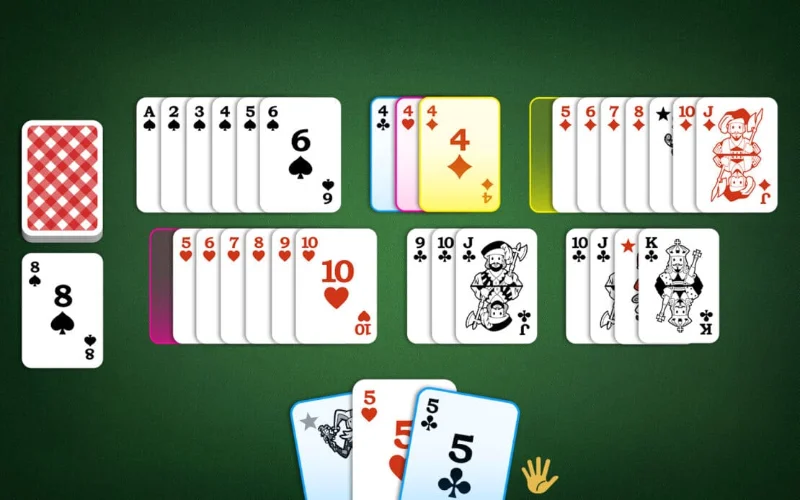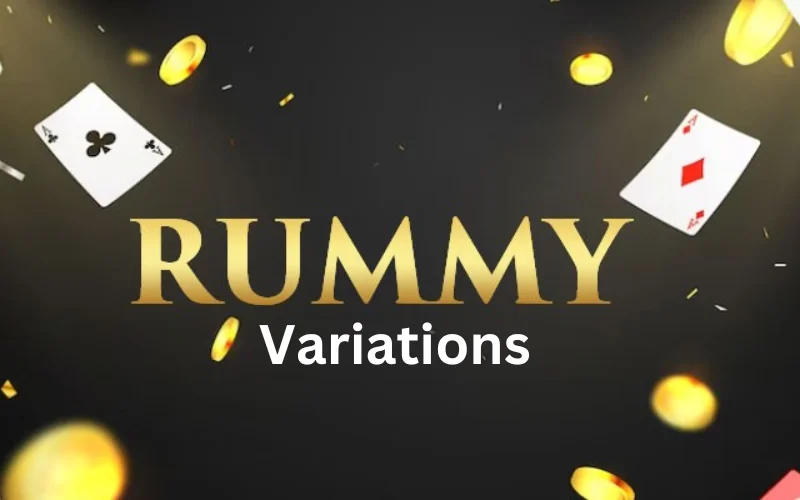Rummy is one of the most popular card games in the world, known for its exciting mix of strategy and skill. While the traditional version of Rummy is fun in its own right, numerous rummy variations offer fresh twists and unique challenges. Whether you’re a seasoned player or new to the game, understanding the different rummy variations, rummy sets, and rummy variation rules can add variety and depth to your gaming experience. This article will look at some popular Rummy Best variations and provide a breakdown of their key rules.
What Are Rummy Variations?
Rummy variations are different versions or types of the classic rummy game, each with its rules and strategies. While the fundamental objective of Rummy—forming sets or runs of cards—remains the same across most variations, the rules and nuances can differ. These variations often add new elements to the game, such as wild cards, specific card combinations, or altered scoring methods, making each version unique and interesting.
Some popular rummy variations include Gin Rummy, Kalooki (or Kaluki), Indian Rummy, and Contract Rummy. Although each game has slight differences in rules, it all shares the core principles of rummy gameplay.
Understanding Rummy Sets and Runs
Before diving into specific rummy variation rules, it’s essential to understand the fundamental components of the game—rummy sets and runs.
- Rummy Sets: A set consists of three or more cards of the same rank but different suits. For example, a set might contain the cards 7♠, 7♣, and 7♦. The goal is to form sets during your turn by picking up a card from the deck or discard pile and then discarding one in return.
- Rummy Runs: A run consists of three or more consecutive cards of the same suit. For example, a run might be 3♠, 4♠, and 5♠. Unlike sets, runs must be in numerical sequence and follow the same suit.
In most rummy variations, you must form a combination of sets and/or runs to “meld” or complete the hand. Players usually need to create at least one valid set and one valid run to declare their hand and win the game.
Popular Rummy Variations and Their Rules
Now that we understand rummy sets and runs, let’s explore some popular rummy variations and their unique rules.
1. Gin Rummy
Gin Rummy is among the most well-known rummy variations, particularly popular in the United States. It’s a fast-paced, strategic two-player game.

Rummy variation rules for Gin Rummy:
- The objective is to form sets and runs from the cards dealt to you.
- Players can draw from the deck or the discard pile and must discard a card at the end of each turn.
- Players can “knock” if they have fewer than 10 points worth of unmelded cards, meaning they’ve formed enough sets and runs to end the round.
- The game ends when a player reaches a specific score, typically 100 points.
2. Indian Rummy
Indian Rummy is a popular variation of rummy played with two decks of cards and a joker. Two to six players usually play it.
Rummy variation rules for Indian Rummy:
- The game uses two decks of 52 cards plus a joker.
- Players must form at least two sequences (one of which must be a pure sequence without a joker) to declare the game.
- A player can use the joker as a substitute for any card to form a set or run.
- The game ends when a player has formed their valid sets and runs and declares.
3. Kalooki (or Kaluki)
Kalooki (also known as Kaluki or Kalookey) is another well-loved Rummy variation often played in social settings.
Rummy variation rules for Kalooki:
- Kalooki is typically played with 2 to 4 players and uses two decks of cards with jokers.
- Players can lay down sets and runs and are also allowed to manipulate the table by adding cards to existing combinations.
- The main aim is to eliminate all your cards by creating valid sets and runs.
- The game allows for “melds” to be created using previously played cards on the table, adding an extra layer of strategy.
4. Contract Rummy
Contract Rummy is a unique rummy variation that introduces a contract for each hand, making the game progressively more challenging as the rounds progress.
Rummy variation rules for Contract Rummy:
- Players play a series of rounds, each with its own “contract” or requirement (e.g., making a set of 4 cards, a run of 5 cards, etc.).
- Players must complete the specific contract for that round to win and move on to the next.
- The game continues for a set number of rounds, with the difficulty of the contracts increasing as the game progresses.
5. Oklahoma Rummy
Oklahoma Rummy is another popular variation similar to Gin Rummy but with a slight twist: the first card dealt determines the value of the next round.
Rummy variation rules for Oklahoma Rummy:
- The game starts similarly to Gin Rummy, with each player trying to form sets and runs.
- The first card dealt in each round determines the value of the first card that must be used to knock.
- Players must make the required set or run based on the value of the first card drawn.
How to Choose the Right Rummy Variation
With so many rummy variations, how do you decide which one to play? The answer depends on your personal preferences and the number of players involved. If you enjoy fast-paced games, Gin Rummy might be ideal for you. If you prefer a more complex, multi-round experience, Contract Rummy might be the better choice. Each variation offers something different, so try out a few and see which suits your style.
Conclusion
Rummy variations offer endless fun and excitement for players of all skill levels. Whether you prefer the straightforward gameplay of Gin Rummy or the intricate strategy of Contract Rummy, there’s a rummy variation to suit your tastes. By understanding rummy sets, runs, and each version’s unique rummy variation rules, you can enjoy this timeless card game in a new way. So gather your friends, pick your variation, and start playing today!







